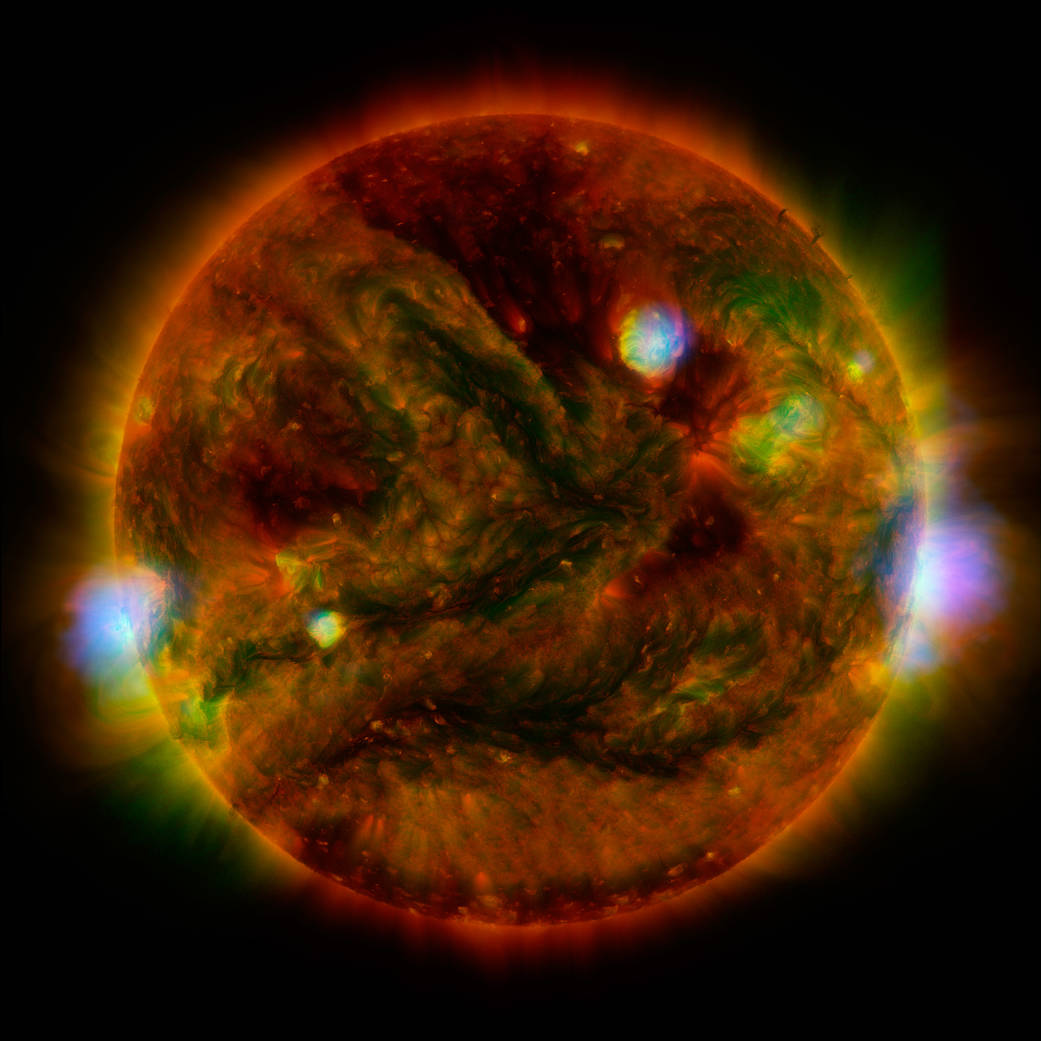On April 29, 2015, NuSTAR, Hinode, and Solar Dynamics Observatory all stared at our Sun.
Flaring, active regions of our Sun are highlighted in this image combining observations from Nuclear Spectroscopic Telescope Array, or NuSTAR (shown in blue); low-energy X-rays from Japan’s Hinode spacecraft are green; and extreme ultraviolet light from Solar Dynamics Observatory, or SDO, are yellow and red. This NuSTAR image is a mosaic made from combining smaller images.
The active regions across the Sun’s surface contain material heated to several millions of degrees. The blue-white areas showing the NuSTAR data pinpoint the most energetic spots. During the observations, microflares went off, which are smaller versions of the larger flares that also erupt from the sun’s surface. The microflares rapidly release energy and heat the material in the active regions.
Image Credit: NASA/JPL-Caltech/GSFC/JAXA
2015年4月29日,NuSTAR、Hinode和太阳动力学观测站都在观测着太阳。
在这张结合了核光谱望远镜阵列(NuSTAR)观测结果的图片中,太阳耀斑和活跃区域被突出显示(蓝色显示);来自日本日之出航天器的低能X射线显示为绿色;来自太阳动力学观测站(SDO)的极紫外光显示为黄色和红色。这张NuSTAR图像是由较小的图像组合而成的拼图。
太阳表面的活跃区域含有温度高达数百万度的物质。显示NuSTAR数据的蓝白色区域精确指出了能量最强的点。在观测期间,微耀斑爆发,它是同样从太阳表面爆发的较大耀斑的较小版本。微耀斑迅速释放能量并加热活动区域的物质。
图片来源:NASA/JPL-Caltech/GSFC/JAXA







